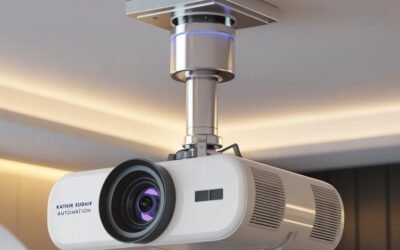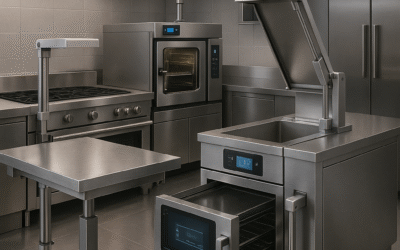BlogS
Projector Up and Down Using a Linear Actuator: A Complete Guide
Integrating a projector into a modern media room, classroom, or planetarium often requires more than simply mounting it on the ceiling. Many users want a clean, hidden setup where the projector smoothly descends when needed and retracts when not in use. This is where...
OEM Kitchen Equipment Is Advancing with Linear Actuator Automation
The commercial kitchen industry is changing faster than ever before. Restaurants, catering units, cloud kitchens, hospital kitchens, and large-scale food production facilities are now expecting more than just durability from OEM stainless steel equipment—they want...
Incubator Automation for Egg Hatching Using Electric Linear Actuators
Every poultry farmer knows the excitement of seeing the first cracks appear on an egg. But behind that moment is a long journey of care, precision, and patience. In the early days, most of this work was manual. Farmers would rotate the eggs by hand, open and close...
Tyre Lifting & Holding using Electric Linear Actuator in Tyre Manufacturing Company
In a tyre manufacturing company, precision and stability play a crucial role in every production stage — from material loading to final quality inspection. One of the often-overlooked yet essential movements in the process is lifting and holding heavy tyre molds or...
Caravan Automation Using Electric Linear Actuators
Traveling in a caravan has always been a mix of adventure and effort. Setting up your caravan at a campsite—leveling it, extending the awning, or adjusting the windows—used to take time and sometimes a lot of muscle. But thanks to electric linear actuators, all these...
Conference Table Lifting System Using Electric Linear Actuator
A few months ago, a leading corporate design firm approached us with an interesting challenge. They were setting up a new executive conference hall where aesthetics and technology had to go hand in hand. The client wanted something that would make meetings more...
Frequently Asked Questions(FAQ)
What is a linear actuator?
A linear actuator is a device that converts rotational motion into linear motion. It is used to move objects in a straight line
What are the benefits of using a linear actuator?
The benefits of using a linear actuator include precise and controlled linear motion, compact size, easy installation, and efficiency.
How do I install and maintain my linear actuator?
The installation and maintenance of a linear actuator will depend on the specific model and type. Refer to the manufacturer’s instructions for installation and maintenance guidelines.
What safety precautions should I take when working with linear actuators?
Always follow the manufacturer’s instructions and safety guidelines when working with linear actuators. Ensure that the actuator is properly secured and that the power source is disconnected before working on the actuator.
What is the difference between a linear actuator and a rotary actuator?
A linear actuator moves in a straight line, while a rotary actuator rotates around an axis. Linear actuators are used when linear motion is required, whereas rotary actuators are used when rotational motion is needed.
What is the difference between an electric linear actuator and a hydraulic linear actuator?
An electric linear actuator uses electrical energy to create linear motion, while a hydraulic linear actuator uses pressurized hydraulic fluid to create linear motion. Electric linear actuators are typically easier to install and maintain, while hydraulic linear actuators can generate higher force.
Can a linear actuator be used for precise positioning?
Yes, linear actuators are often used for precise positioning due to their ability to provide accurate and repeatable linear motion.
How do I determine the stroke length of a linear actuator?
The stroke length of a linear actuator is the distance the actuator can travel in a straight line. To determine the required stroke length, consider the distance the actuator needs to move to complete its intended task.
What are some common materials used to make linear actuators?
Linear actuators can be made from a variety of materials, including aluminum, stainless steel, plastic, and carbon fiber. The choice of material will depend on the specific application and environmental conditions.
Can a linear actuator be used in hazardous environments?
Yes, some linear actuators are designed for use in hazardous environments and are made from materials that can withstand exposure to extreme temperatures, chemicals, or other hazardous conditions.
Can a linear actuator be customized to fit my specific application?
Yes, many manufacturers offer customized linear actuators to fit specific applications. These can include modifications to stroke length, force, speed, mounting options, and environmental protection.






